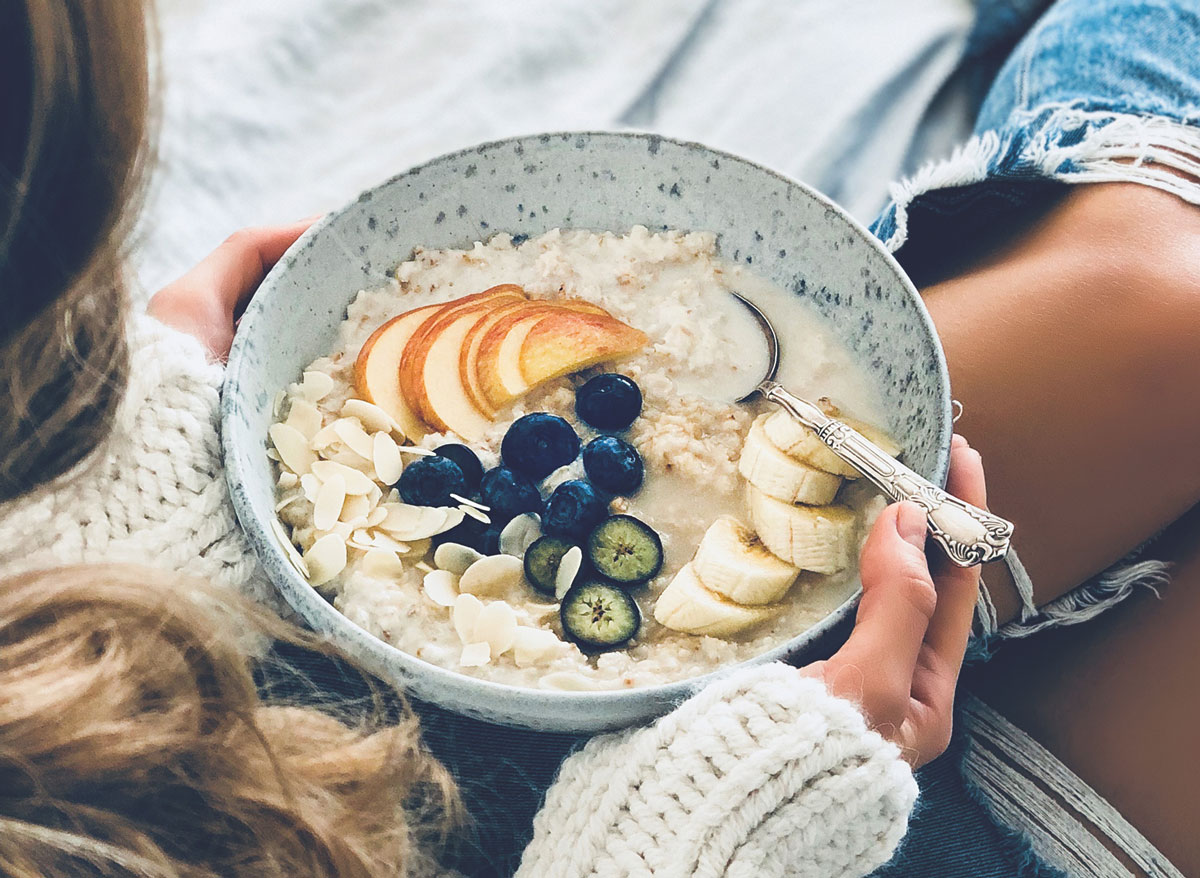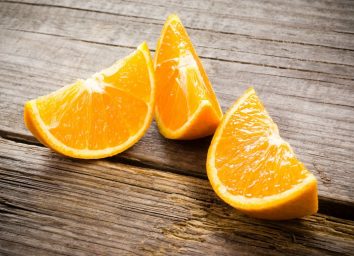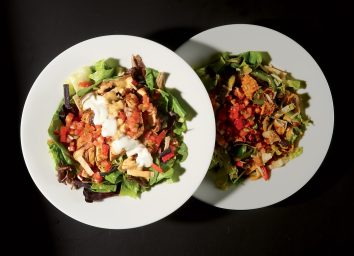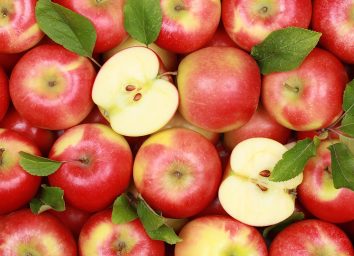The #1 Thing To Eat Every Day To Lose Weight For Good

Are you tired of trying diet after diet and never seeing results? That's probably because your eating plan isn't leaving you satisfied long term, and likely because you aren't getting enough fiber on a daily basis. Fiber actually plays a significant role in weight management for people long term, and yet, people still aren't getting enough of it.
According to the USDA, adults are recommended to get at least 25 (for women) to 38 (for men) grams of fiber a day. Yet while this sounds small, it's not nearly as small compared to what the average American typically gets now, which is only 10 to 15 grams a day.
Ten grams may not seem like much, but when looking at how decreasing proper fiber intake will affect the body over time, the results are pretty severe. Not just in terms of gaining weight and obesity, but it's even linked to a myriad of autoimmune diseases.
In order to better understand fiber, we did the research and spoke with two professionals on what fiber does to the body, including the major repercussions that take place when a person doesn't get enough of it.
What fiber does to your body
Fiber is actually indigestible—it goes right through your system. Fiber is part of the carbohydrate found in plant cell walls, which is why common items that come from plants have it like fruits, vegetables, whole grains, beans, legumes, avocados, leafy greens, and more.
"There are two types, soluble and insoluble," says Amy Goodson, MS, RD, CSSD, LD. "Soluble fiber is the type that can help your heart health by helping lower total and bad cholesterol. Insoluble fiber aids in gastrointestinal health, acting like a 'broom' to help push stuff through."
Because of the way it moves through your body, it actually revs up your metabolism and helps you to feel full for longer periods of time.
"When you digest food, your body expends calories," says Tanya Zuckerbrot MS, RD, and founder of the F Factor Diet. "Fiber is indigestible, fiber has no calories, but your body attempts to break it down, So in that attempt, your body tries to break it down, and we call this thermogenesis. Thermogenesis is anything that increases your body's internal temperature which ultimately impacts your metabolism. So the more fiber you eat, the faster your metabolism gets."
Not only that, but fiber can actually attach itself to toxins in the body—as well as the calories and fat cells that you take in—and flush them out.
"Fiber acts like a sponge in your stomach, and in your intestines," says Zuckerbrot. "It combines with cholesterol and estrogen and toxins and ushers them out of the body. In addition to all of those things, fiber can actually combine with fat and calories. When you eat fiber with foods with calories and fat, the fiber binds up with a percent of those calories and fat and ushers them out of the body. So rather than 100% of those calories and fat entering into your bloodstream where they can ultimately land at your thighs and your hips and your belly, a percent of those calories can combine with the fiber—which can not be digested because it gets evacuated—and those calories and grams of fat end up in the toilet bowl."
Because of this process, studies show that getting a sufficient amount of dietary fiber can significantly reduce the risk of weight gain. Because the body feels full from the fiber, people are less likely to overeat in the long run, creating a caloric deficit over time.
"For weight loss, fiber is helpful because it helps you get full faster and stay full longer," says Goodson. "This can help people take in fewer calories at meals and ideally stay satisfied for a longer period of time before they go looking for something else to eat."
Fiber is important for gut health
Not only does fiber help with weight management, but it plays a significant role in reducing inflammation in the body and the risk of autoimmune diseases.
According to Zuckerbrot, it all starts with your microbiome. Without fiber, the gut wall lining in the microbiome starts to thin. The bacteria that gets close to your gut wall will enter your bloodstream, which produces cytokine. Cytokine causes inflammation and according to studies, it is linked to all kinds of autoimmune diseases including psoriasis, alopecia, Crohn's, colitis, Parkinson's, MS, obesity, certain forms of cancer, and more.
"The roll that fiber plays in gut health is fascinating," says Zuckerbrot. "You can repopulate your microbiome with a high fiber diet, that's why you hear so much about prebiotics and probiotics."
Your microbiome has microflora, which is a collective bacteria that helps you to digest food.
"Think of the microflora as little PAC-MEN," says Zuckerbrot. "When the fiber passes, they chomp on it, and then they can repopulate. And then that repopulation, that's when the gut wall thickens, and that's what you want."
Zuckerbrot quickly mentions the Hazda tribe, an African tribe that has been heavily researched in the past because of their diet, which consists of 100 to 150 grams of fiber a day. In one study on their feces, researchers found a healthy variety of microbes compared to those who eat a typical Western diet.
How you can incorporate more fiber into your diet
Make simple swaps. Eating a high-fiber diet doesn't require you to diet it all, it just means you can make a few simple swaps in order to get your daily recommended intake. "I would say swapping a cup of watermelon to a cup of raspberries. You know a cup of watermelon is 1 gram and a cup of raspberries is 8. Switch from lettuce to kale, that takes you from 1 gram to 3 grams. Switch from [one slice of] white bread to whole wheat bread, so that takes you from 1 gram to 5 grams. Switch from Special K or cornflakes to All-Bran, that's 13 grams," says Zuckerbrot. Check out our list of high-fiber foods for some assistance.
Strive for 5 grams of fiber per meal, or more. Goodson says that if you try to incorporate at least 4 to 5 grams off fiber in all of your meals and snacks, you'll get close to what you need. "Focus on eating 100% whole grains, vegetables, fruits where you can eat the skin, beans, lentils, nuts, and seeds can help ensure you are getting enough! Incorporating a variety of those foods into all your meals and snacks can add variety and fiber," says Goodson.
Ease it in slowly. You'll likely experience some gas at first, but as Zuckerbrot says "this too shall pass." She points out that her stomach is flat and not gassy even after eating 60 to 80 grams of fiber a day, and says that it will pass. "I would say introduce fiber slowly, 10 grams. Then work your way up to 20 grams and then 30," she says.
Water is essential. "It is so important when adding fiber to your diet is to up your fluid intake. To eat a lot of fiber without proper hydration, the fiber can harden," says Zuckerbot. "So you want to make sure you are drinking plenty of water. I recommend for every 10 grams of fiber [to drink] 1 liter of water. So if you're getting 30 grams of fiber, it should be 3 liters…which equals about 12 cups of water a day."
For more healthy eating tips, be sure to sign up for our newsletter.








